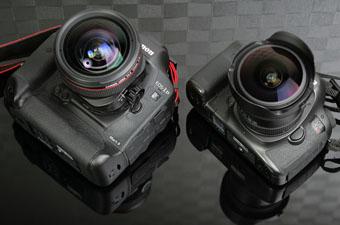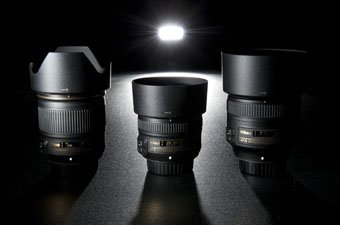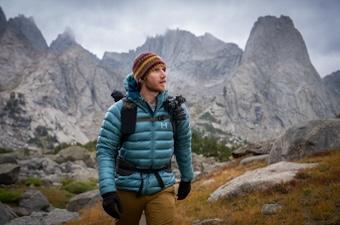The Canon Rebel SL1 is one of the smallest and lightest DSLRs ever made. At just 14.4 ounces you get much of the performance of the popular Rebel series of DSLRs without weighty features like a flip-out screen. However, for those who want big image quality without the bulk, the 18-megapixel Canon SL1 gives mirrorless cameras a serious run for their money. Below we break the best lenses for the Canon EOS Rebel SL1, from the STM kit lenses offered in a bundle with the camera to specific prime and zoom lens for wide-angle, portrait, and telephoto photography.
Canon Rebel SL1 Kit Lenses
Canon 18-55mm f/3.5-5.6 STM ($499 for the kit)
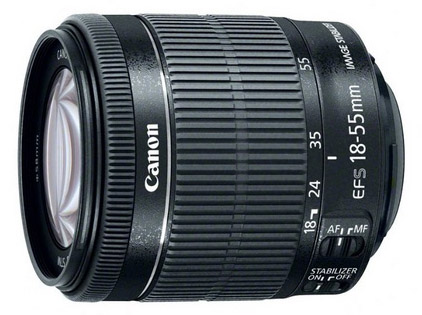 Weight: 7.2 oz.
Weight: 7.2 oz.
Max Aperture: f/3.5
What we like: Great for video.
What we don’t: Plastic build and underperforms in low light.
Canon’s STM (Stepping Motor technology) lenses were built specifically with video in mind—they focus more quietly and smoothly than USM lenses. The bottom line is that STM are less likely to get in the way of shooting great video, while USM are slightly better for still photography. Accordingly, if video is a priority, this 18-55mm STM lens and the bundle below are nice options to pair with the SL1. With a focal length equivalent of 29-88mm on a 35mm camera, this lens a bit wide for landscapes and architecture but very useful for people and portrait shots. It’s also lightweight at just over 7 ounces and comes with image stabilization (IS) technology to help with hand-held photos when natural light is less than optimal.
See the Canon 18-55mm Kit
Canon 18-55mm STM and 55-250mm STM ($648)
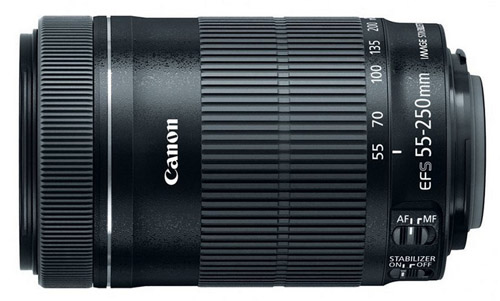 Weight: 13.2 oz.
Weight: 13.2 oz.
What we like: Covers the spectrum of focal lengths with two lenses.
What we don’t: Low light performance could be better.
If you’re shooting video with your new Canon SL1 and considering the 18-55mm STM lens above, it makes a lot of sense to bundle it with the 55-250mm STM. For only about $150 more, you’re covering the full focal length range from wide-angle to telephoto. It’s true that you may want to buy prime lenses as your photography skill advance, but this bundle is a nice head start and a great value. We wish the maximum aperture range was better on both lenses, but they are still workable in most conditions (you can add a cheap portrait lens like the Canon 50mm f/1.8 II below to augment your low light needs).
See the Canon 18-55mm Bundle
All-In-One Lenses
Sigma 18-250mm f/3.5-6.3 Macro OS ($349)
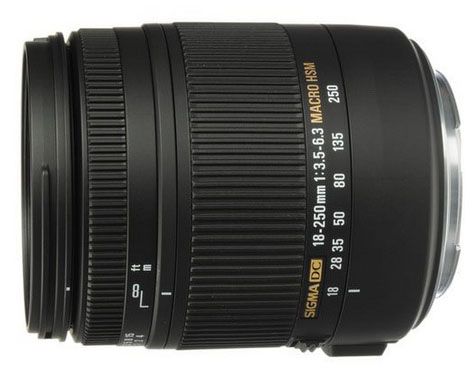 Weight: 16.6 oz.
Weight: 16.6 oz.
Max Aperture: f/3.5
What we like: Light for an all-in-one lens and a great value.
What we don’t: Aperture drop-off at the telephoto end.
Compared to the Canon 18-200mm below, the Sigma 18-250mm f/3.5-6.3 Macro OS is a nice budget all-in-one lens to pair with the Canon SL1. For about half the price, it covers more focal lengths with a zoom range equivalent to 28-400mm, and weighs only 16.6 oz. Why is so much cheaper? First, you’ll notice the aperture drop-off at the wide end—f/6.3 vs. f/5.6 on the Canon. The lens does come with Sigma’s OS (Optical Stabilization) technology, which is similar to Canon’s IS (Image Stabilization) for hand held photos in low light. Second, the Thermally Stable Composite material used in the lens barrel isn’t quite as durable as a harder plastic or metal. Third, the optical performance isn’t quite as impressive with distortion and some softness in the corners. Nevertheless, it’s a great value at around $350. Make sure to use the lens lock as the barrel has a tendency to creep.
See the Sigma 18-250mm
Canon 18-200mm f/3.5-5.6 IS ($699)
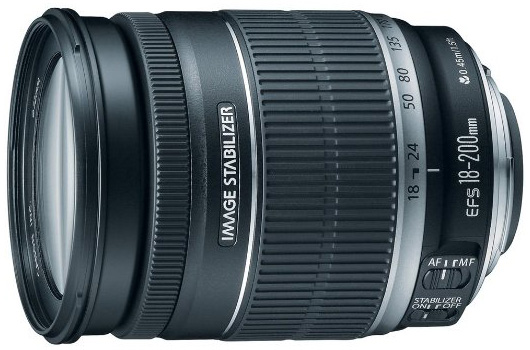 Weight: 21 oz.
Weight: 21 oz.
Max Aperture: f/3.5
What we like: Extremely versatile.
What we don’t: Heavy and noticeable distortion at the wide end.
Amateur photographers tend to favor all-in-one lenses that can replace an entire bag full of primes and zooms. To meet the demand and compete with Nikon’s popular 18-200mm, Canon designed the 18-200mm f/3.5-5.6 IS. With a zoom range equivalent to a whopping 29-320mm on a 35mm camera, there’s no doubt this all-in-one lens has you covered. It doesn’t excel at the wide end with significant distortion at 18mm, so landscape photographers should consider a different lens that is superior in that category. But it’s reasonably sharp throughout its zoom range and has good optics overall. One issue to consider is that the manual focus ring turns when autofocus is in use, which can make the lens awkward to hold.
See the Canon 18-200mm
Wide-Angle Lenses
Canon 10-18mm f/4.5-5.6 IS STM ($299)
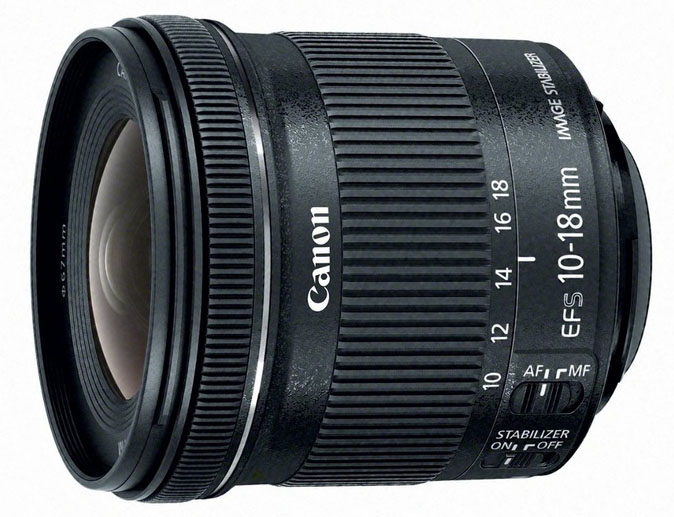 Weight: 8.5 oz.
Weight: 8.5 oz.
Max Aperture: f/4.5
What we like: Extremely lightweight and sharp.
What we don’t: Plastic construction (but this does save a lot of weight).
Canon hit it out of the park with its new 10-18mm f/4.5-5.6 IS STM lens, quieting the clamoring of wide-angle APS-C shooters who didn’t want to spend over $600 on the 10-22mm f/3.5-4.5 below. Released in 2014, this lens has a focal length equivalent of 16-28.8mm on a 35mm camera, making it a terrific option for landscapes and wide-angle urban photography. In addition, this lens is sharp, has minimal distortion except when wide open at 10mm, and is exceptionally well priced for a wide-angle zoom. The maximum aperture of f/4-5.6 isn’t optimal, but the lens does have four stops of image stabilization to help.
See the Canon 10-18mm STM
Sigma 10-20mm f/4-5.6 ($379)
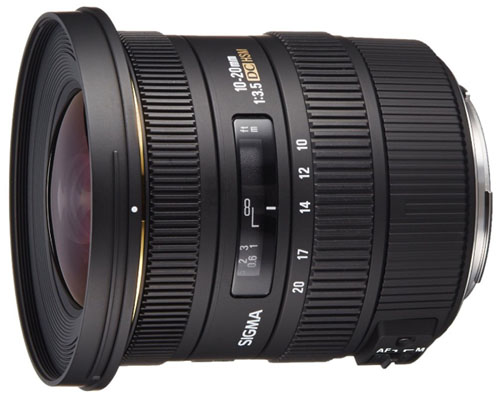 Weight: 18.3 oz.
Weight: 18.3 oz.
Max Aperture: f/4
What we like: A good value for a wide-angle zoom.
What we don’t: Build quality is questionable.
The Sigma 10-20mm f/4-5.6 used to be the leading budget wide-angle lens to pair with the Canon SL1, but that distinction has been lost with the release of the Canon 10-18mm above. You do get a bit of extra length—this lens is equivalent to 16-32mm on 35mm camera—but it’s also more expensive and has the same aperture range. And despite a similar plastic build, the Sigma weighs more than twice as much at over 18 ounces. Price notwithstanding, we also tend to give the nod to Canon over Sigma, making the choice even more clear. If you already own the Sigma, there is no reason to switch. But for first-time wide-angle lens buyers, we like the Canon 10-18mm.
See the Sigma 10-20mm
Portrait Lenses
Canon 40mm f/2.8 STM ($154)
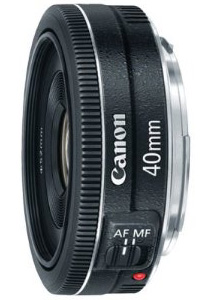 Weight: 4.6 oz.
Weight: 4.6 oz.
Max Aperture: f/2.8
What we like: Lightweight and low profile.
What we don’t: Could be sharper.
A good number of pancake lenses are made for mirrorless cameras, but Canon manufactured a 40mm f/2.8 STM compatible with its DSLRs including the Canon SL1. With a low profile and ultra-lightweight design, the Canon 40mm lens produces great images with almost no distortion. It also features an STM motor for smooth and silent autofocus, ideal for video. One consideration is that the focal equivalent on the SL1 is 64mm, which isn’t as commonly used as more popular focal lengths like 50mm or 85mm. But that doesn’t mean it can’t or shouldn’t be, and you may be pleasantly surprised at the utility of this field of view.
See the Canon 40mm STM
Canon 50mm f/1.8 II ($115)
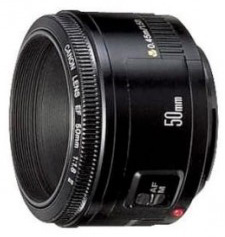 Weight: 4.6 oz.
Weight: 4.6 oz.
Max Aperture: f/1.8
What we like: Lightweight and cheap.
What we don’t: Plastic construction.
With a focal length equivalent of 80mm, the 50mm f/1.8 II is an excellent everyday lens for portraits and travel. We love this lens—it’s lightweight, sharp, performs well in low light, and is one of the best values on this list. So what are the downsides of the Canon 50mm f/1.8 II? Aside from the actual glass, the lens is constructed entirely of plastic, so you shouldn’t expect it last forever. But given its optical quality, we think this lens should be in just about everyone’s bag from beginners to enthusiasts. For professionals and those want even better low light performance, try the Canon 50mm f/1.4.
See the Canon 50mm
Canon 15-85mm f/3.5-5.6 IS USM ($799)
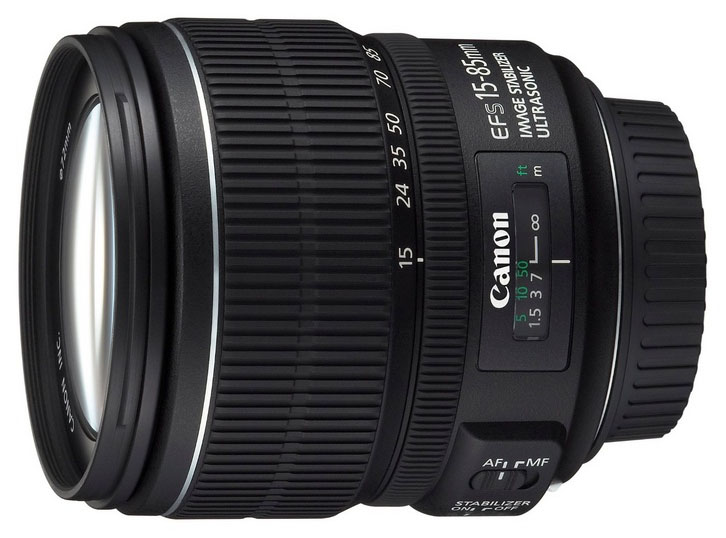 Weight: 20.3 oz.
Weight: 20.3 oz.
Max Aperture: f/3.5
What we like: Versatile and sharp.
What we don't: Pricey and a bit on the heavy side.
The Canon 15-85mm f/3.5-5.6 IS USM is a premium lens. Instead of carrying around and switching out multiple lenses, the 15-85mm covers an impressive spectrum of focal lengths from wide-angle to medium telephoto (it’s equivalent to 24-136mm on a 35mm camera). Compared to the 18-55mm STM kit lens, you get critical extra wide-angle capability—24mm compared to 29mm—and it has manual focus override that is activated simply by moving the focus ring with your finger. Like many zoom lenses of this type, you can some expect distortion at the wide end so it’s best to shoot your wide-angle shots at 17mm instead of 15mm. For video, the USM motor isn't quite as quiet or smooth as an STM lens.
See the Canon 15-85mm USM
Macro Lenses
Canon EF-S 60mm f/2.8 Macro USM ($535)
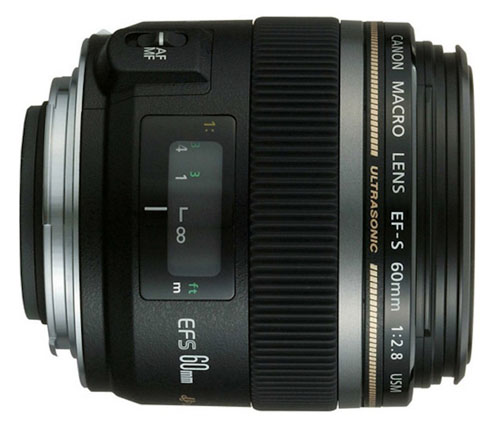 Weight: 11.8 oz.
Weight: 11.8 oz.
Max Aperture: f/2.8
What we like: Very sharp for a macro lens.
What we don’t: Autofocus can be slow.
If you plan on shooting macro images with your SL1, the clear winner in this category is the Canon 60mm f/2.8 USM. This EF-S format lens is sharp, reasonably light at less than 12 ounces, and captures great images with an equivalent focal length of 96mm. One shortcoming is that the autofocus isn’t always as fast as we would like, but you can easily switch over to manual when necessary. For an even closer focal length, try the Canon EF 100mm f/2.8 Macro USM, which is equivalent to 161mm on the SL1.
See the Canon EF-S 60mm
Telephoto Lenses
Canon 55-250mm f/4-5.6 IS II ($249)
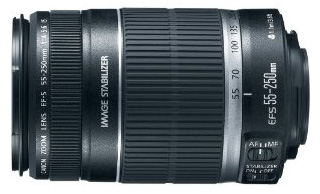 Weight: 13.8 oz.
Weight: 13.8 oz.
Max Aperture: f/4
What we like: Inexpensive for a telephoto zoom.
What we don’t: Autofocus has tendency to hunt.
If you already have the 18-55mm kit lens or a combination of other wide-angle and portrait lenses, the Canon 55-250mm f/4-5.6 IS II is nice way to complete your camera bag. For only $299, you get a perfectly capable telephoto zoom that covers a wide range of focal lengths equivalent to 88-400mm on a 35mm camera. The maximum aperture range of f/4-5.6 isn’t optimal when natural light is low but the lens does come with Canon’s image stabilization technology to help offset camera shake. And considering its range, the Canon 25-250mm is relatively light at less than 14 ounces. This may not be a telephoto zoom for highly discerning professionals, but it’s a nice and versatile telephoto zoom with a reasonable price tag.
See the Canon 55-250mm
Canon SL1 Lens Comparison Table
| Lens | Price | Type | Aperture | Weight | IS | Filter |
|---|---|---|---|---|---|---|
| Canon 18-55mm f/3.5-5.6 IS STM | $249 | Kit | f/3.5-5.6 | 7.2 oz. | Yes | 58mm |
| Sigma 18-250mm f/3.5-6.3 Macro OS | $349 | All-in-one | f/3.5-6.3 | 16.6 oz. | Yes | 62mm |
| Canon 18-200mm f/3.5-5.6 IS | $699 | All-in-one | f/3.5-5.6 | 21 oz. | Yes | 72mm |
| Canon 10-18mm f/4.5-5.6 IS STM | $299 | Wide angle | f/4.5-5.6 | 8.5 oz. | Yes | 67mm |
| Canon 10-22mm f/3.5-4.5 USM | $599 | Wide angle | f/3.5-4.5 | 13.6 oz. | No | 77mm |
| Canon 40mm f/2.8 STM | $149 | Portrait | f/2.8 | 4.6 oz. | No | 52mm |
| Canon 50mm f/1.8 II | $115 | Portrait | f/1.8 | 4.6 oz. | No | 52mm |
| Canon 15-85mm f/3.5-5.6 IS USM | $799 | Portrait | f/3.5-5.6 | 20.3 oz. | Yes | 72mm |
| Canon 60mm f/2.8 Macro USM | $535 | Macro | f/2.8 | 11.8 oz. | No | 52mm |
| Canon 55-250mm f/4-5.6 IS STM | $299 | Telephoto | f/4-5.6 | 13.3 oz. | Yes | 58mm |

